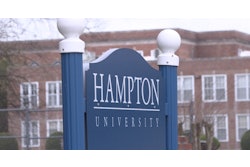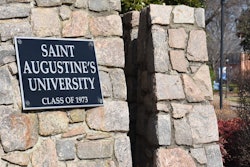Report Reveals Best and Worst Schools for Graduating Minorities
By Charles Dervarics
Top ten lists are increasingly common on issues across the United States, but a new report from the nation’s capital is raising eyebrows by identifying the best and worst colleges for graduating Black and Hispanic students.
The report from The Education Trust also lists the colleges and universities with the largest “graduation gaps,” or differences in graduation rates between Whites and minorities. The report also targets other questionable admission policies, particularly what it describes as “enrollment management” techniques that reward
upper-income students but sometimes shortchange those with lower incomes.
“Some institutions clearly do a better job of graduating their Latino and African-American students than their peers do,” according to the report, titled “Promise Abandoned: How Policy Changes and Institutional Practices Restrict College Opportunities.” However, the study noted that “the high and low performers aren’t always the institutions you might expect.”
Stanford University had the highest graduation rate for Black students, with 89 percent, followed by Duke University’s 86 percent. Historically Black colleges and universities took the next two positions, as Spelman College and Miles College had rates of 77 percent and 72 percent, respectively.
Other institutions with a strong track record of graduating Blacks included the University of North Carolina-Chapel Hill, Hood College and Hiram College. Two other HBCUs — Claflin University and Fisk University — also scored well.
Among Hispanic students, Stanford held the top spot, with a 92 percent graduation rate. Those in the top 10 in Latino graduation rates included the Massachusetts Institute of Technology, Rice University and seven other California universities, including four branches of the University of
California system.
Schools with the lowest Hispanic graduation rates generally were in New York state or the southwestern United States. Those on the list included Huston-Tillotson College, Boricua College in New York and Western New Mexico University.
“The numbers are heart-breaking,” says Kati Haycock, director of Education Trust. “At just the moment when governors and
K-12 leaders are working so hard to reshape high schools so all of their graduates will be ready for college, our higher education system seems to be heading in the opposite direction.”
The report also singled out Wayne State for a sizable gap in graduation rates between Whites and African-American students. While only 10 percent of Blacks typically graduate from the institution, 44 percent of Whites earn their degree. By comparison, Florida State University and Old Dominion University have nearly identical graduation rates for Whites and African-Americans.
A top official at Wayne State acknowledges that the Detroit-area institution faces retention challenges. “This is not a new problem,” says Howard Shapiro, associate vice president for undergraduate programs and general education. As an urban university, he says, the institution has many low-income and commuter students — two groups with traditionally high dropout rates.
The university recently launched more intensive retention programs, including learning communities with a peer mentor for every 15 to 20 students. “We need to set the bar higher,” he says.
The City University of New York-Staten Island had the greatest disparity in graduation rates, with Whites much more likely than Hispanics to graduate, the Education Trust reported. The University of Miami (Fla.) and the University of California-Irvine were at the other end of the spectrum, with Hispanic graduation rates nearly as high as Whites.
In all cases, the graduation rates are three-year averages among students who completed college within six years of enrollment. Nationwide, among all four-year institutions, graduation rates are 59 percent for Whites, 47 percent for Hispanics and 40 percent for Blacks, the report says.
Also in the report, Education Trust says some colleges may be driving away low-income minority students through questionable admissions practices.
Of particular concern is a tactic called “admit-deny,” in which a college admits a low-income student but offers so little financial aid that he or she is unlikely to enroll there.
The same college then may turn around and give financial aid — in the form of tuition discounts — to affluent high-achievers with stronger test scores.
“Colleges and universities are not just victims of bad policy choices, they too are making bad choices, and in the process they are shutting the doors of opportunity for low-income students,” Haycock says.
A spokesman for a college admissions association did not take issue with the report’s rhetoric but says that most leaders in the sector oppose techniques such as admit-deny.
“It is a practice that is universally condemned. But it’s a phenomenon that apparently occurs,” says Barmak Nassirian, associate executive director of the American Association of Collegiate Registrars and Admissions Officers.
“Nobody is likely to admit, ‘Yes, I do this,’” he adds. “But we don’t think it’s appropriate. We’re counselors, not salespeople.”
© Copyright 2005 by DiverseEducation.com















